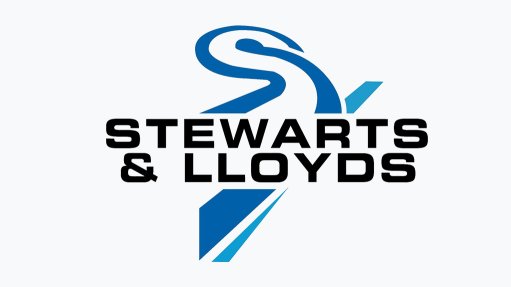Solving Eskom’s inability to meet demand requires multistakeholder participation – EIUG
The Energy Intensive Users Group (EIUG) says that the task of mitigating risks related to the system performance and defining future electricity supply is too complex to be resolved by power utility Eskom alone, but instead requires active participation by other stakeholders as well.
EIUG CEO Fanele Mondi notes that the latest Eskom system status briefing (its winter plan) and poor performance during May, are evidence of increased levels of system strain, characterised by growing unplanned generation outages and a shortage of generation capacity to perform maintenance and meet demand.
The EIUG believes strongly that the current focus should be on fundamental issues, such as creating time for Eskom to undertake maintenance, professionalising procurement processes and obtaining funds for maintenance, executing effective maintenance practices and managing the demand side.
In addition, the group says focus should also be on adding generation capacity through the Renewable Energy Independent Power Producer Procurement Programme, distributed generation projects and further structural reforms.
The EIUG shared its concerns and possible solutions with Eskom leadership, saying both parties agreed that various stakeholders, including Eskom, the private sector, the public, government and the regulator, can offer numerous mitigating options starting with demand-side solutions, supply-side solutions and energy storage.
The EIUG also notes that short-term solutions need to focus on preventing, or at least reducing, load-shedding and stabilising the grid.
In the medium term, additional generation and storage capacity needs to be added.
Following the EIUG’s discussion with Eskom, parties agreed to continue to engage and to share information on possible solutions.
Mondi says that, for South Africa to prosper, an enabling electricity supply industry that will ensure security of supply, stabilise escalating electricity costs and decarbonise its economy needs to be created.
Mondi adds that the EIUG’s approach is to actively assist, rather than to criticise. “We, therefore, acknowledge Eskom’s efforts to turn around its business for the benefit of the country and we have offered to assist where we can.”
He says the EIUG’s members are participating in demand-side response in the form of the reduction of energy use by intensive energy users to prevent load-shedding and stabilise the grid, when requested.
In addition, Mondi says the EIUG is also encouraging its members to expedite activities in mitigation of energy insecurity through self-generation projects.
“We are part of the Presidency’s Operational Vulindlela task team, which deals specifically with electricity self-generation enablement, and are working with various stakeholders . . . and relevant government departments and agencies to clear identified obstacles.”
EIUG members also continue to invest private capital in energy efficiency and power generation projects to alleviate the supply deficit.
However, in this regard, he says more can be done.
“This could take the form of public-private partnership projects, private sector energy storage solutions, private sector ancillary services and a plan to coordinate activities between Eskom and intensive energy users that can assist the grid and create space for Eskom to undertake its much-needed maintenance.
“Some EIUG members are currently offering such programmes despite a negative financial and production impact,” says Mondi.
Article Enquiry
Email Article
Save Article
Feedback
To advertise email advertising@creamermedia.co.za or click here
Comments
Press Office
Announcements
What's On
Subscribe to improve your user experience...
Option 1 (equivalent of R125 a month):
Receive a weekly copy of Creamer Media's Engineering News & Mining Weekly magazine
(print copy for those in South Africa and e-magazine for those outside of South Africa)
Receive daily email newsletters
Access to full search results
Access archive of magazine back copies
Access to Projects in Progress
Access to ONE Research Report of your choice in PDF format
Option 2 (equivalent of R375 a month):
All benefits from Option 1
PLUS
Access to Creamer Media's Research Channel Africa for ALL Research Reports, in PDF format, on various industrial and mining sectors
including Electricity; Water; Energy Transition; Hydrogen; Roads, Rail and Ports; Coal; Gold; Platinum; Battery Metals; etc.
Already a subscriber?
Forgotten your password?
Receive weekly copy of Creamer Media's Engineering News & Mining Weekly magazine (print copy for those in South Africa and e-magazine for those outside of South Africa)
➕
Recieve daily email newsletters
➕
Access to full search results
➕
Access archive of magazine back copies
➕
Access to Projects in Progress
➕
Access to ONE Research Report of your choice in PDF format
RESEARCH CHANNEL AFRICA
R4500 (equivalent of R375 a month)
SUBSCRIBEAll benefits from Option 1
➕
Access to Creamer Media's Research Channel Africa for ALL Research Reports on various industrial and mining sectors, in PDF format, including on:
Electricity
➕
Water
➕
Energy Transition
➕
Hydrogen
➕
Roads, Rail and Ports
➕
Coal
➕
Gold
➕
Platinum
➕
Battery Metals
➕
etc.
Receive all benefits from Option 1 or Option 2 delivered to numerous people at your company
➕
Multiple User names and Passwords for simultaneous log-ins
➕
Intranet integration access to all in your organisation

















